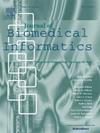Scalable and efficient on-chain data management in blockchain for large biomedical data
IF 4
2区 医学
Q2 COMPUTER SCIENCE, INTERDISCIPLINARY APPLICATIONS
引用次数: 0
Abstract
Blockchain technology is gaining traction in the biomedical sector due to its ability to improve trust and reduce the risk of fraud and errors in health data management. However, the large volume of biomedical datasets has slowed its adoption due to poor scalability. This challenge is especially relevant for applications that rely on blockchain’s strong immutability by storing data directly on-chain. In this work, we demonstrate the potential of blockchain to create a secure and trustless environment for managing large on-chain records. Specifically, we detail an efficient, index-based approach for storing data on the Ethereum blockchain. We show that insertion and retrieval speeds remain nearly constant relative to database size, scaling linearly with the amount of data processed. Additionally, we achieve substantial efficiency gains through low-level assembly optimizations on the Ethereum Virtual Machine, highlighting the limitations of the Solidity compiler. Finally, we illustrate this approach through a practical case study, by designing and implementing a smart contract for storing and querying training certificates on the Ethereum blockchain. Our solution achieves 2x faster data insertion, 500x faster retrieval, 60% lower gas costs, and 50% lower storage usage compared to baseline methods. It won first place for track 1 of the 2022 iDASH secure genome analysis competition. We also demonstrate that this solution readily adapts to other data types, enabling efficient on-chain storage and retrieval of text, RNA-seq, or biomedical image data.

区块链中用于大型生物医学数据的可扩展和高效的链上数据管理。
区块链技术在生物医学领域越来越受欢迎,因为它能够提高信任,减少健康数据管理中的欺诈和错误风险。然而,由于可扩展性差,大量的生物医学数据集阻碍了它的采用。对于直接在链上存储数据而依赖区块链的强不变性的应用程序来说,这个挑战尤其重要。在这项工作中,我们展示了区块链为管理大型链上记录创建一个安全且无需信任的环境的潜力。具体来说,我们详细介绍了一种基于索引的高效方法,用于在以太坊区块链上存储数据。我们表明,插入和检索速度相对于数据库大小几乎保持不变,并随着处理的数据量线性扩展。此外,我们通过对以太坊虚拟机上的低级汇编优化实现了实质性的效率提升,突出了Solidity编译器的局限性。最后,我们通过一个实际案例研究来说明这种方法,通过设计和实现一个智能合约,用于在以太坊区块链上存储和查询培训证书。与基准方法相比,我们的解决方案将数据插入速度提高了2倍,检索速度提高了500倍,天然气成本降低了60%,存储使用量降低了50%。它在2022年iDASH安全基因组分析竞赛中获得了第一名。我们还证明,该解决方案很容易适应其他数据类型,实现有效的链上存储和检索文本、RNA-seq或生物医学图像数据。
本文章由计算机程序翻译,如有差异,请以英文原文为准。
求助全文
约1分钟内获得全文
求助全文
来源期刊

Journal of Biomedical Informatics
医学-计算机:跨学科应用
CiteScore
8.90
自引率
6.70%
发文量
243
审稿时长
32 days
期刊介绍:
The Journal of Biomedical Informatics reflects a commitment to high-quality original research papers, reviews, and commentaries in the area of biomedical informatics methodology. Although we publish articles motivated by applications in the biomedical sciences (for example, clinical medicine, health care, population health, and translational bioinformatics), the journal emphasizes reports of new methodologies and techniques that have general applicability and that form the basis for the evolving science of biomedical informatics. Articles on medical devices; evaluations of implemented systems (including clinical trials of information technologies); or papers that provide insight into a biological process, a specific disease, or treatment options would generally be more suitable for publication in other venues. Papers on applications of signal processing and image analysis are often more suitable for biomedical engineering journals or other informatics journals, although we do publish papers that emphasize the information management and knowledge representation/modeling issues that arise in the storage and use of biological signals and images. System descriptions are welcome if they illustrate and substantiate the underlying methodology that is the principal focus of the report and an effort is made to address the generalizability and/or range of application of that methodology. Note also that, given the international nature of JBI, papers that deal with specific languages other than English, or with country-specific health systems or approaches, are acceptable for JBI only if they offer generalizable lessons that are relevant to the broad JBI readership, regardless of their country, language, culture, or health system.
 求助内容:
求助内容: 应助结果提醒方式:
应助结果提醒方式:


